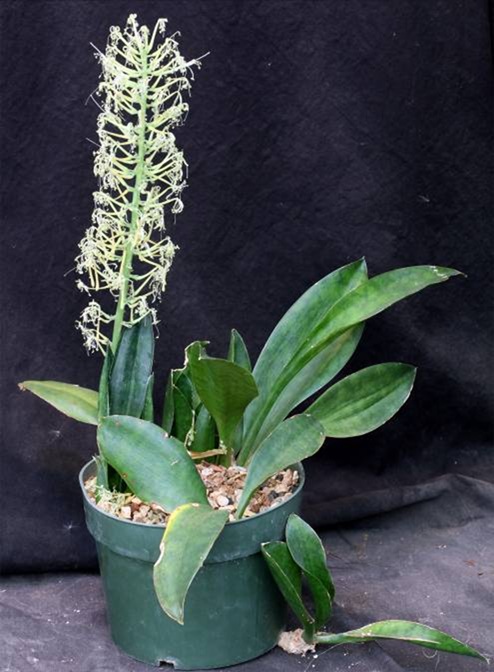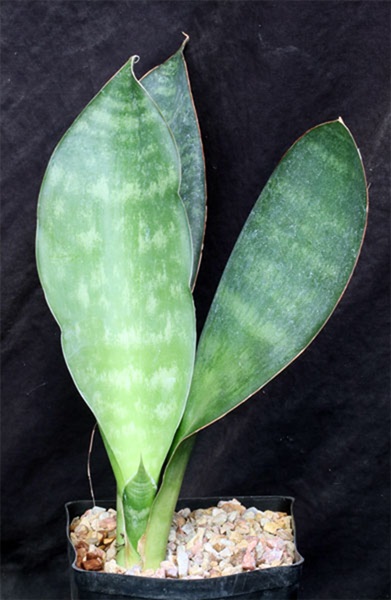| Protologue: |
Curtis's Botanical Magazine 129: t. 7877(1903). |
| Etymology: |
The epithet refers to the large growth of the leaves. |
| |
Sansevieria grandis Hooker var. zuluensis N. E. Brown |
| Protologue: |
Bulletin of Miscellaneous Information, Kew 5: 228 (1915). |
| Etymology: |
The subspecies epithet refers to its occurrence in Zululand within Kwa-Zulu Natal Province of South Africa. |
| Subgenus: |
Sansevieria |
| Group: |
Sansevieria hyacinthoides |
| Distribution: |
Southern Africa, particularly South Africa. |
| Brief Description of the Typical Species: |
The acaulescent and rhizomatous species has 4 - 5 leaves per rosette with a height of up to 60 cm (generally 15 - 23 cm) and a width of 2.5 - 3.5 cm. The leaves are flat, obovate, ascending or broadly spreading, smooth to the touch, and terminate in a soft tip. The leaves vary from an unpatterned dark green to lighter green leaves patterned with blotches and transverse banding. The margin is slightly wavy, reddish-brown, and non-shredding. The inflorescence is about 60 cm high. |
| Brief Description of the Variety zuluensis: |
This variety is similar to the typical species except for broader (and longer) leaves, more intense patterning of the leaves, and differences in the inflorescence characteristics. |
| Similar Species: |
This species is considered to be synonymous with Sansevieria hyacinthoides, and yet it bears less resemblance to that species than it does to Sansevieria fasciata. Variety zuluensis appears to have affinity to Sansevieria hyacinthoides but has much taller leaves. More research needs to be conducted to determine if Sansevieria grandis should be recognized as a species again or remain under S. hyacinthoides. |
| |
| |

Sansevieria grandis flowering in cultivation.
|
| |

Sansevieria grandis (Mason 119) in cultivation.
|

